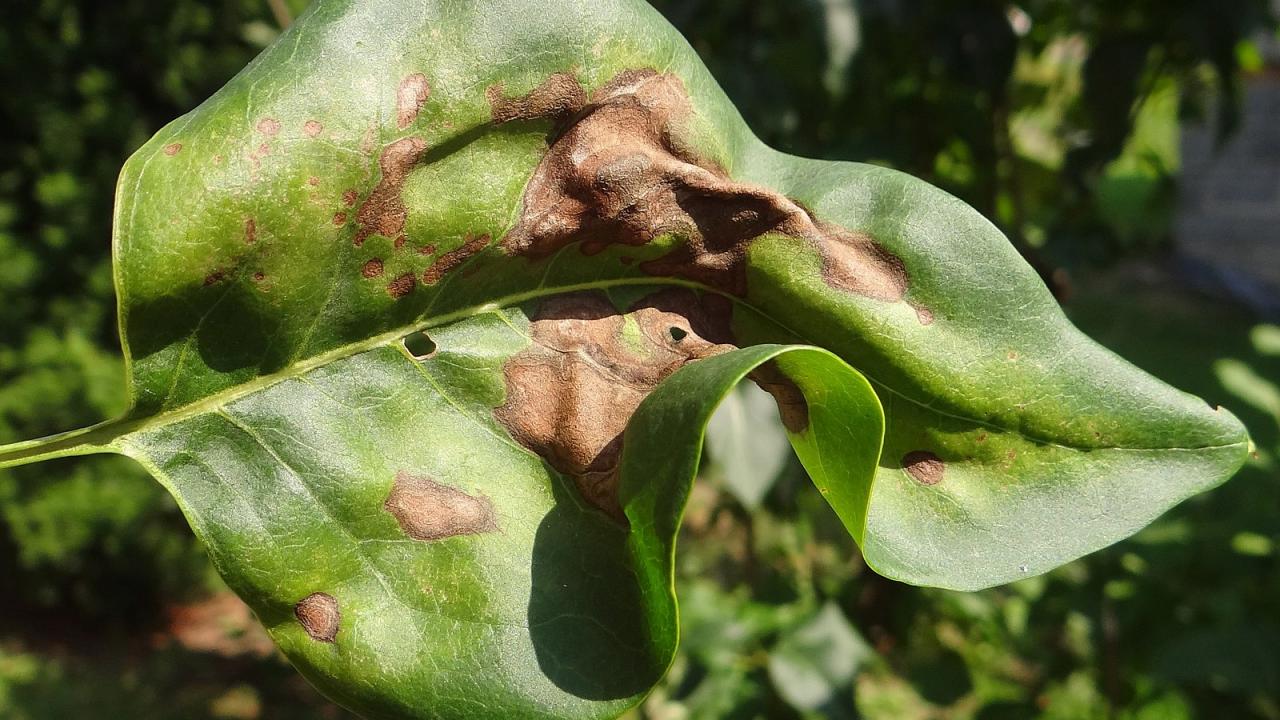
Mounting a Molecular Attack: Study Uncovers Strategies Plant Pathogens Use to Manipulate Host’s Cellular Recycling Systems
The ceaseless confrontations between host and pathogen play out on a microscopic battlefield. Both host and pathogen use various strategies to gain the upper hand in these molecular skirmishes.
Autophagy—the biological process responsible for recycling cellular components and degrading protein aggregates and damaged organelles—helps all eukaryotes, including plants, defend themselves against harm. Literally meaning “self-eating,” this process helps prevent infections from pathogens and plays a key role in immunity.
But pathogens have evolved molecular strategies to manipulate the autophagy process for their benefit. How exactly they do this remains a molecular mystery, but researchers are starting to lift the veil shrouding the process.
“Host and pathogens are in a war to subjugate and destroy each other,” said Neeraj Lal, a recent graduate of the Biochemistry, Molecular, Cellular and Developmental Biology Graduate Group at UC Davis. “Similar to nations, the war is not fought by the whole country but by individual people in the army, in this case host and pathogen deploy their proteins to attack each other.”
In a study appearing in Cell Host & Microbe, plant biologists, including Lal and Professor of Plant Biology Savithramma Dinesh-Kumar, highlight key proteins that allow pathogens to target and manipulate the molecular machinery responsible for a host plant's autophagy process.
“Although it is widely accepted that autophagy is anti-pathogen, it is not a simple clear-cut case,” said Dinesh-Kumar. “We found that autophagy has a dual role in bacterial infection. It can play both anti- and pro-bacterial functions.”
The research could lead to new strategies that help bolster the immunity of crops.
“If we could understand how to modulate autophagy, we could come up with strategies to control pathogen infection,” said Dinesh-Kumar.
Paradoxical proteins
In the study, the team investigated how the pathogenic bacteria Pseudomonas syringae, known for causing a range of plant diseases, modulates the autophagy process of Arabidopsis thaliana, a popular plant model organism.
P. syringae employs a suite of effector proteins to successfully infect its plant hosts, but the team focused their experimental efforts on three proteins, including HrpZ1, HopF3 and AvrPtoB. These three proteins specifically target core AutTophaGy (ATG) proteins in plants.
The team performed a systematic analysis on the molecular methods these effector proteins utilize to spread the P. syringae pathogen. They found that HrpZ1 and HopF3 both target an autophagy protein called ATG8, but they affect ATG8 differently. While HrpZ1 enhances the role of autophagy, HopF3 suppresses it; yet they each promote bacterial virulence.
Despite this seemingly paradoxical finding, it’s not surprising, according to Dinesh-Kumar.
“It is known in the case of Salmonella – that the host autophagy not only eliminates Salmonella but also facilitates its intracellular replication,” he said. Additionally, “autophagy plays a dual role in cancer. It functions to suppress cancer initiation at early stages by preventing tissue damage and inflammation. At late stages, the cancer cells upregulate autophagy activity to circumvent nutrient starvation and hypoxia stresses.”
Promoting bacterial virulence
The effector protein AvrPtoB, the team found, affected the activity of ATG1 kinase, the protein responsible for initiating the autophagy process. The team found that AvrPtoB affects the phosphorylation of ATG1 kinase, preventing it from kickstarting the autophagy process and thus promoting bacterial virulence.
“We hypothesize that this is how it inhibits autophagy,” said Dinesh-Kumar.
While the molecular minutiae of these biochemical processes remains a mystery, this study provides researchers with a template for further studying the role of effector proteins on autophagy.
“We have a lot of work to do to understand the precise way these effectors manipulate autophagy,” said Dinesh-Kumar.
“The better we understand how plant pathogens manipulate autophagy for virulence, the better we can design strategies to combat diseases caused by these pathogens,” he added.
Neeraj Lal, Burinrutt Thanasuwat, Pin-jui Huang, Keri Cavanaugh, Amanda Carter, Richard Michelmore and Savithramma Dinesh-Kumar from UC Davis were involved in this study.
The work was supported by the National Science Foundation.
